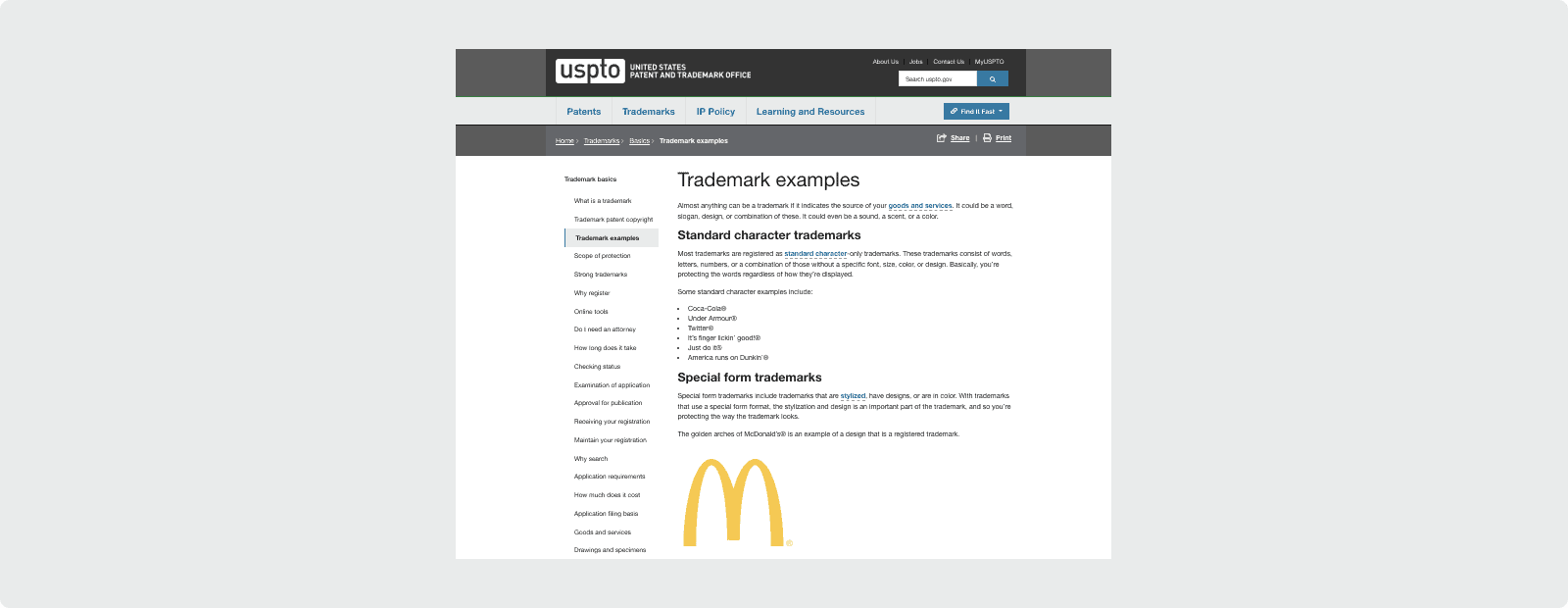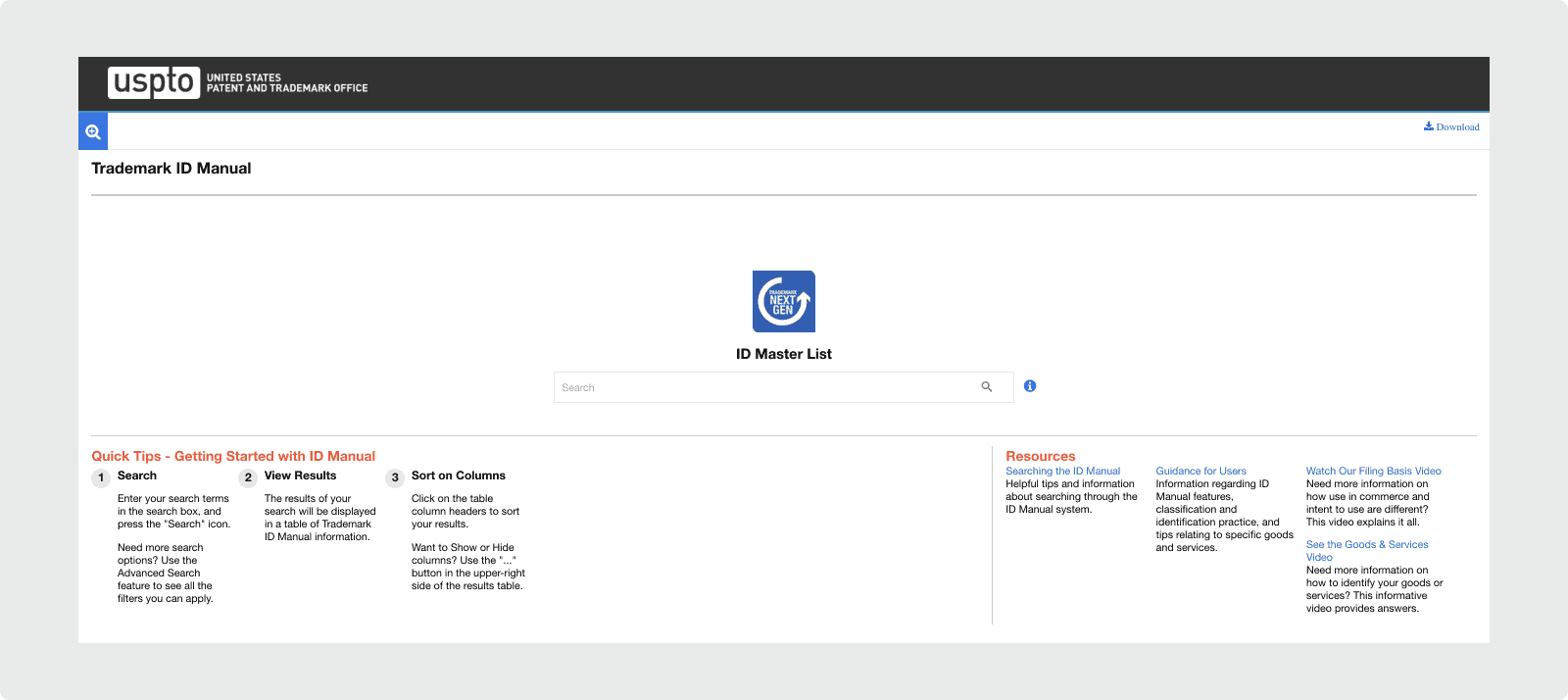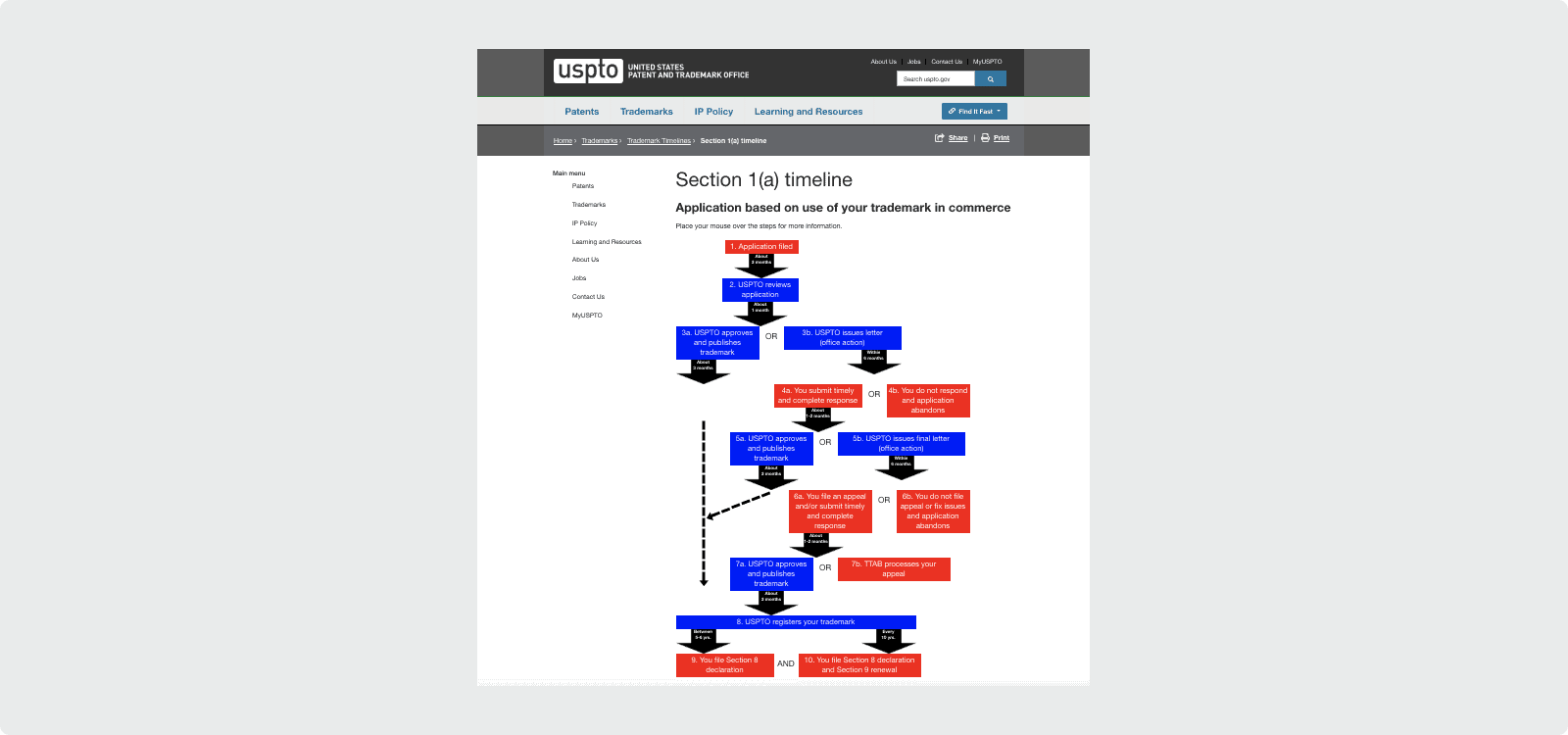Protecting your business entity's intellectual property (IP) is key to maintaining a strong brand equity and an edge over competitors.
That’s why many business owners look into registering trademarks for their business names.
While not required, a trademark can provide legal protection against unauthorized and unlawful usage of your brandable assets. Trademarks can be registered at the federal or state level.
Not every business will need a trademark for its business name. However, suppose you have a competitor selling similar goods or services, especially within your geographic area, or an innovative idea you want to protect from counterfeit. In that case, you should consider this type of registration.
Table of contents
- What is a trademark?
- How to trademark your business name: step-by-step
- Step 1: Perform a trademark name search
- Step 2: Decide on the type of trademark you need
- Step 3: Prepare for an online trademark application
- Step 4: Complete the application paperwork and pay the fees
- Alternatives to the federal trademark application
- FAQs about trademarking a business name
What is a trademark?
The United States Patent and Trademark Office (USPTO) defines a trademark as being “generally a word, phrase, symbol, or design, or a combination thereof, that identifies and distinguishes the source of the goods of one party from those of others.”
A trademark is a legal mechanism that protects other businesses from using your name, slogan or mark for marketing or selling their goods or services.
Business name registration vs. trademarks
A trademark for your business name should not be confused with registering your business name.
Typically, when you register your business with a state, you must list a legal name on company formation documents. This name needs to be distinguishable from the names of other local business entities.
But simply registering a business name with a state doesn’t prevent other businesses or persons from using that name in commerce.
A federal trademark application for your business name can protect its use by other business entities in all 50 states of the U.S. selling the same class of goods and services as your business. State trademark registration does the same on a lower level.
Why obtain a trademark?
Protecting your brand’s image is the main reason for obtaining a trademark.
If you want to protect your brand reputation, fear that competitors or copycats may try to use your name to sell counterfeit products or establish a reputation with customers. You should consider filing a trademark application to obtain exclusive rights.
In addition to obtaining a trademark for your business name, you can also get a trademark for logos, slogans, designs, and symbols, so long as they meet the requirements.
Given the costs, business owners should consider whether a trademark is necessary or feasible to obtain.
When assessing trademark applications, USPTO will consider whether there’s a likelihood of customer confusion. Meaning if your name sounds too similar to another registered trademark name, then your application may be denied.
What is the scope of protection of a trademark?
A registered trademark protects other businesses from using that mark for selling similar goods and services.
However, the trademark registration only applies to a specific type of product or service you’re selling.
For example, if you’re selling healthy snacks and register “Yumchi™,” another business in this niche won’t get the same trademark.
The caveat here is that adding another class to a trademark application costs extra money.
For example, if you also want to extend the trademark protection to say “personal training services,” you’ll pay extra.
Benefits of getting a trademark for your business name
Here are the benefits of getting a federal trademark:
- Ensure higher brand name recognition among customers
- Prevent competitors from using the same business name to sell similar goods or services
- Give your business legal options and remedies to protect its brand image through trademark rights
- Help prevent counterfeits that may take advantage of the use of mark via trademark law proceedings
How to trademark your business name: step-by-step
If you’ve decided that a trademark is what your business needs, here are the steps you’ll need to take for registering it:
- Perform a trademark name search
- Decide on the type of trademark you need
- Prepare for an online trademark application
- Complete the application paperwork and pay the fees
Step 1: Perform a trademark name search
First, you should conduct a trademark search using the USPTO's Trademark Electronic Search System. It’s a trademark database of federally registered trademarks.
You should evaluate the following factors when conducting a trademark database search:
- Consider the goods and services your business name should be associated with.
- Narrow your search using available filters for goods and services classes. Your goal is to verify that no similar marks exist in your niche.
Business owners should make sure the federal trademark application meets the requirements of (1) distinctiveness and (2) uniqueness.
Thus when you conduct this search, you want to look for any business entity that provides similar goods or services as your business entity and has a trademark or service mark similar to the one you wish to register.
If your trademark registration is likely to be confused (due to another similar name and similar registered trademark), then your application will probably be denied.
The USPTO.gov website provides guidance on how to develop an effective search.
If you’re looking to protect your business name on a state level, check in with a state agency such as the Business Division of Corporation or an equivalent. Registering with the state can provide common law rights to the use of the registered mark for that area.
Step 2: Decide on the type of trademark you need
You’ll need to decide if you want a standard character mark or a special character mark in your trademark application.
Now, what is the difference?
If you choose to register a standard character mark, you register the business name as the word. But if you want to include a specific design as part of your trademark registration (e.g., an &), you would choose a special character mark.
Note that if you register your mark as a special character mark, your business name is trademarked like that in design. And you’re obliged to use that design everywhere.
If you choose the federal registration of a standard character mark, you’re trademarking the business name as a word (or words) that are not accompanied by any design.

The USPTO provides some helpful distinctions. As you can see, one includes the design along with the business name (McDonald’s), while others listed above do not.
Step 3: Prepare for an online trademark application
Now let’s get prepared for filing the trademark application. Knowing what information that you’ll need beforehand helps make the process easier.
Here is what you should have prepared before starting the application process:
- Company information, including the business address and contact information
- The type of goods or services your business entity provides
- Specifics on the goods or services your trademark application is requesting to cover
- The class of services or goods can be found using the Trademark ID Manual
- If it cannot be found through the manual, then you’ll need to use a different filling (described further below)
- A drawing of the trademark that you’re registering and a specimen showing how you’ll use it

Step 4: Complete the application paperwork and pay the fees
You can file your trademark application entirely online via Trademark Electronic Application System (TEAS).
There are two options for the trademark application:
- TEAS Standard. Allows using a custom description of your goods and services. This application is easier to fill in but has higher filing costs of $350 per class.
- TEAS Plus. Lets you select among available goods and services descriptions. The application cost is lower ($250 per class), and processing times are statistically faster.
TEAS Plus lets you locate the most suitable description for your trademark or service mark using the Trademark ID Manual.
If there is not a class of goods or services that accurately describes what your business will provide (and so you cannot simply input a classification code), then you'll need to use the TEAS Standard filing. In this trademark application, you'll describe your goods or services yourself.
Note that you may also need additional paperwork. Also, foreign applicants have other requirements, such as designating a U.S.-licensed attorney.
Then you need to validate the information and submit appropriate filing fees.
Trademark fees
|
Trademark application-related fees |
Electronically filed | Paper filed | ||
|
Description |
Fee amount | Fee code | Fee amount | Fee code |
|
Application (paper), per class |
n/a | n/a | $750.00 |
6001 |
|
Application (§66(a)), per class |
$500.00 | 7931 | n/a |
n/a |
|
Application (TEAS Standard), per class |
$350.00 | 7009 | n/a | n/a |
| Application (TEAS Plus), per class | $250.00 | 7007 | n/a |
n/a |
|
Fee for failing to meet TEAS Plus requirements, per class |
$100.00 | 7008 | $100.00 | 6008 |
| Amendment to allege use (AAU), per class | $100.00 | 7002 | $200.00 |
6002 |
|
Statement of use (SOU), per class |
$100.00 | 7003 | $200.00 | 6003 |
| Request for six-month extension for filing an SOU, per class | $125.00 | 7004 | $225.00 |
6004 |
| Request to divide an application, per new application created | $100.00 | 7006 | $200.00 |
6006 |
Trademark application filing fees. Source: USPTO.
Be prepared to receive further communication from the person who will be reviewing your trademark application. By responding promptly, you can help the process go faster.
How much does it cost to trademark a business name?
The base costs are $250 for the TEAS Plus trademark application per class of goods or services and $350 for the TEAS Standard trademark application (again per class).
If your business entity needs to register additional classes of goods or services, there's a separate charge for each one.
There can also be additional fees in some cases. These include amendments, failing to include all required information, statement of use, as examples.
Generally, you should expect to pay around $500 for the initial application.
How long does it take to register a trademark?
The USPTO states that the trademark registration process takes about 12-16 months. The timeline will depend on the type of filling you’ve submitted and the correctness of provided information.
To speed things up, you should promptly respond to all communication from the clerk and carefully review their applications to avoid processing delays.
The USPTO provides sample timelines on its website for when the mark is being used in commerce.

Alternatives to the federal trademark application
Federal trademark registration can be time-consuming and expensive.
Soundly, business owners have several alternatives.
Trademark symbol
One option is using the ™ symbol.
It can be used by a business name so long as that name is being used in trade or commerce. It doesn’t need to be a federally registered trademark. However, without federal trademark registration, business owners have fewer trademark rights. Also, the use of ®, which designates a registered trademark, cannot be used.
State trademark registration
Apart from federal trademark registration, many states also offer trademark services.
You can check with your Secretary of State (SOS) or the local authority responsible for registering assumed names. Typically, state trademark registration is more affordable, and you need to complete a shorter application.
Note: It will only provide trademark protection for that state. Otherwise, you’ll need to obtain a federal trademark.
Copyrights
Another type of intellectual property is copyrights.
While trademarks identify a name or brand, copyright sign © can be used to protect artistically, literary, or intellectually created works.
As a copyright owner, you can obtain a mark by applying via an eCO Online System. You’ll need to create an account, fill out the form and pay a $35 fee.
Trade name (DBA)
A business entity can register a trade name or ”doing business as” (DBA) name with a state or other local jurisdiction.
Filing such an application legally links you (as a person/sole proprietor) with a name you choose to use for business. Likewise, business entities such as an LLC can apply for assumed names to operate under more than one business name.
While a DBA prevents others from registering the same name, it doesn’t convey the same trademark law protection as obtaining a federal trademark.
FAQs about trademarking a business name
Here are frequently asked questions and answers about trademarking a business name: